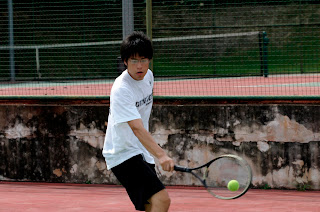CHALLENGE THE ONE IN THE MIRROR!
Have you ever wondered if you can be a all rounder racket player? One cannot perform well if they don’t see the strengths inside of them. A great sportsman or individual take personal inventory on their GOD-given gifts. This impact both their self-image and consequently their results.
Some whom we have approached rejected the idea of Racketlon when they realize the challenge of competing in all 4 racket games. The fear inside them brought them further away from realizing their potential. In actual fact, most of the participants who joined us are only well versed in a racket or two….for some, they are just beginners in all the 4 games.
I have a story to share…..
There was a young basketball player who cut from the varsity team during his tenth grade year. It would be easy for him to evaluate himself and say, ‘That’s it, I quit.’ He took hard look at his own strengths and began to develop them. Many believe that he’s the best player ever. This man is Michael Jordan, the great basketball player. He had to do what all of us have to do. He had to take inventory. He had to see his skills and talents as the gold on the inside, despite what his coach thought. Today, not only he is good in basketball, he ventured into baseball as well.
In life, we cannot consistently perform in a manner that is inconsistent with the way you see yourself. In life, there is an imaginery line called your potential. It stands for who you really are, what you can really do if you want to do it. There is another imaginery line that represents your self image. It stands for who you think you are, what you think you can pull off. You will usually perform at a level that reflects your perspective of yourself.










